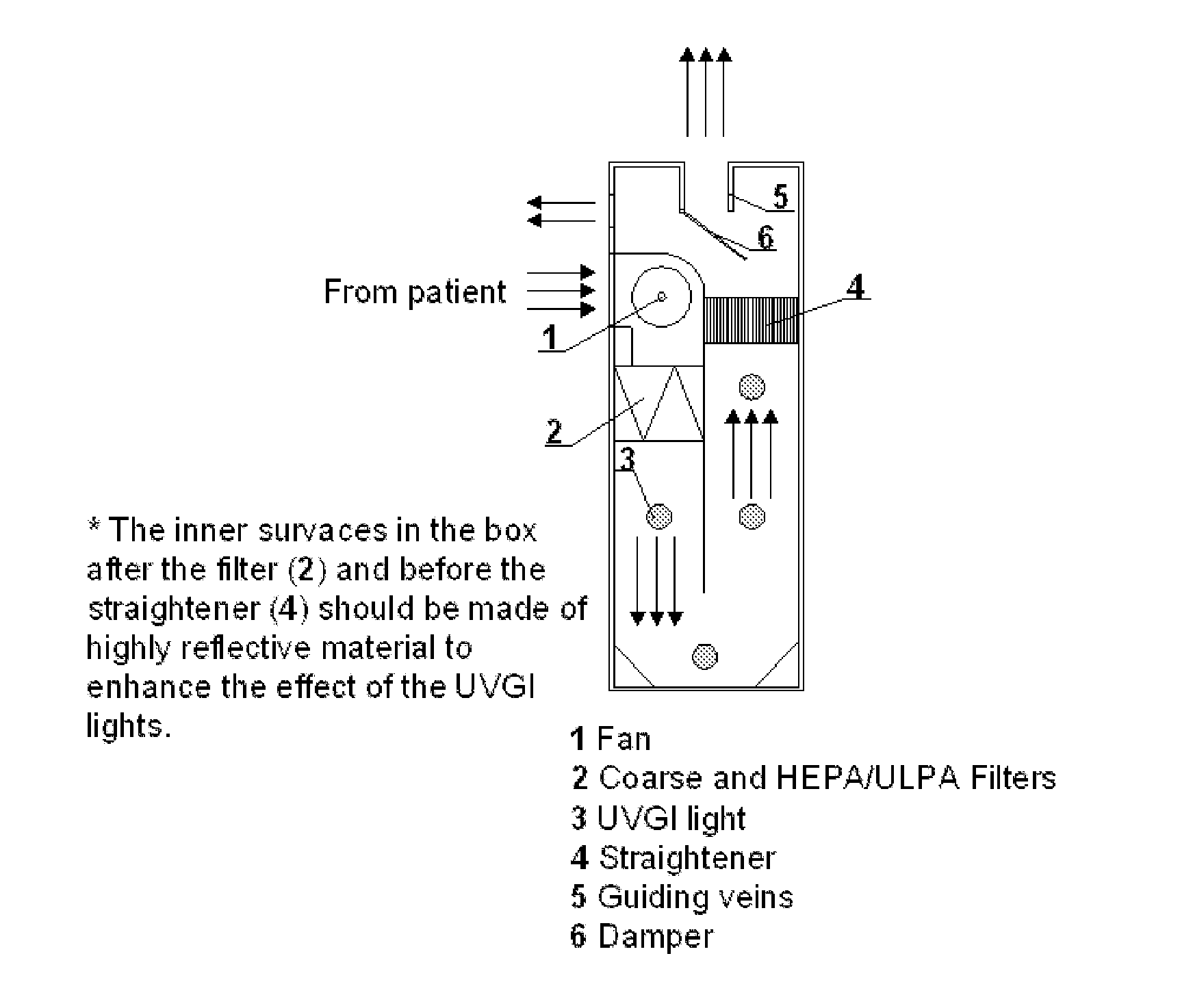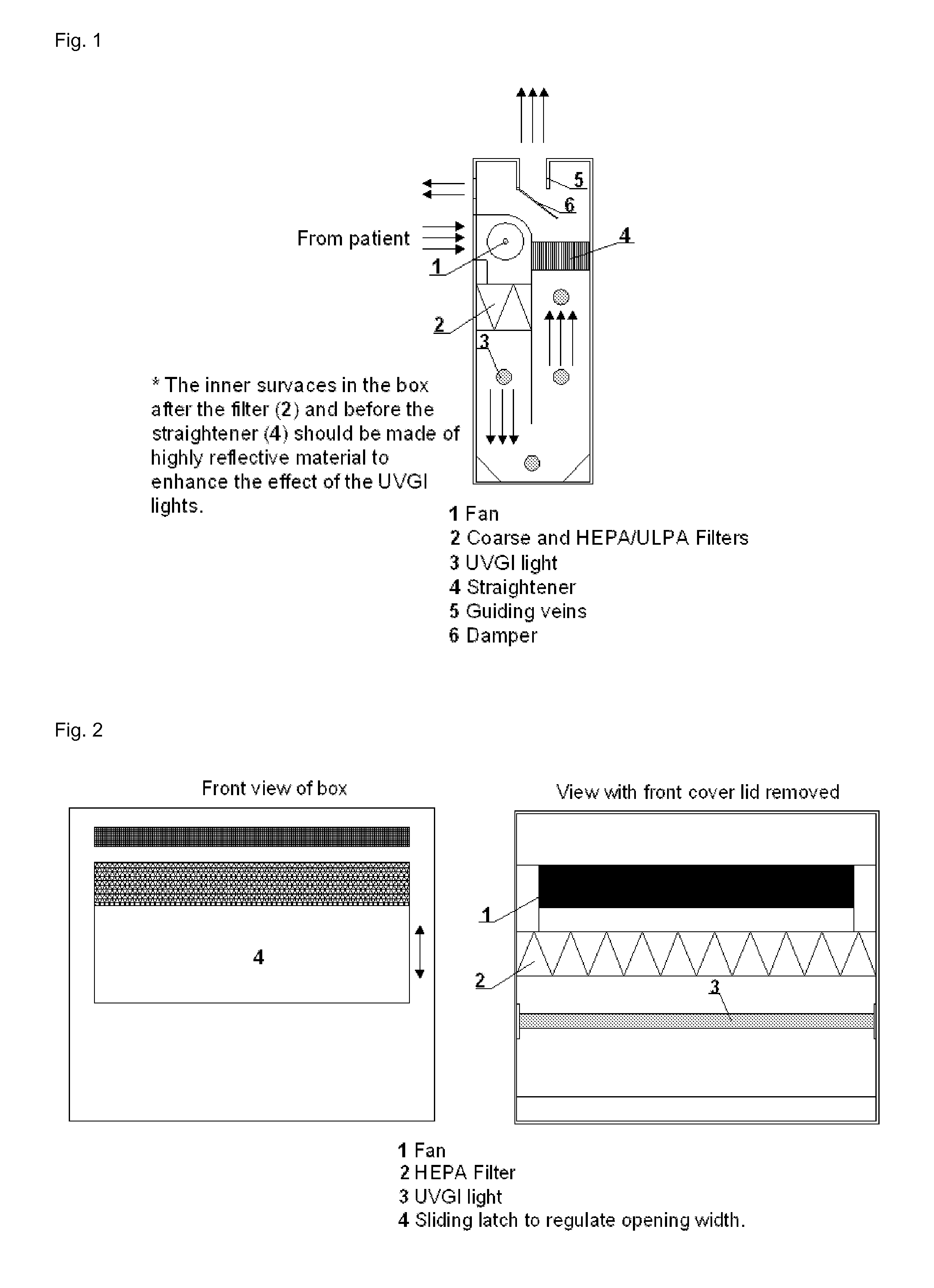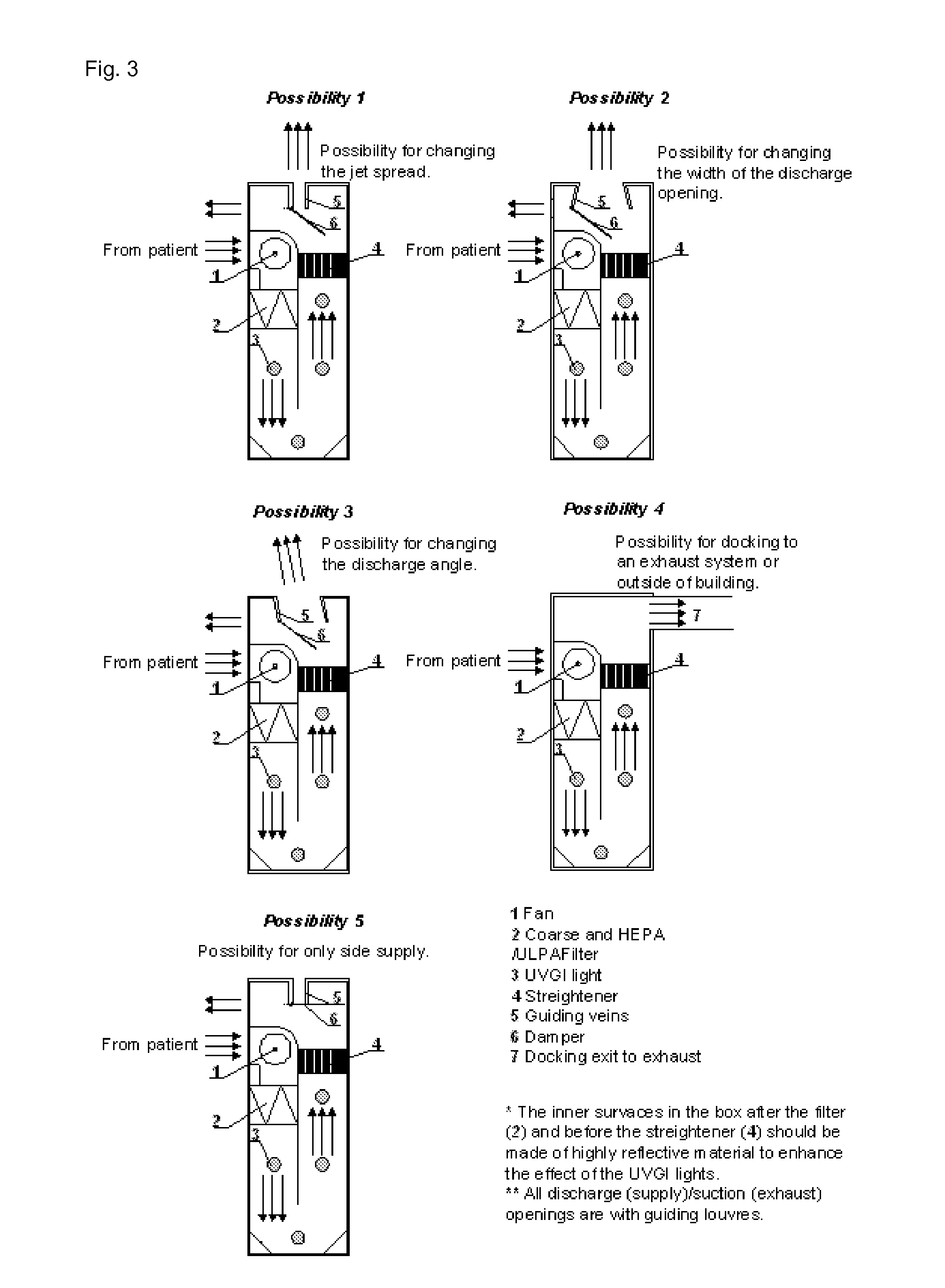Device and method for reducing spread of microorganisms and airborne health hazardous matter and/or for protection from microorganisms and airborne health hazardous matter
a technology of microorganisms and airborne health hazards, applied in the direction of filtration separation, medical science, light and heating equipment, etc., can solve the problems of reducing the effective airflow towards the exhaust opening, and reducing the effective face area of the exhaust. , to achieve the effect of minimising the risk and minimising the smell or quality problems
- Summary
- Abstract
- Description
- Claims
- Application Information
AI Technical Summary
Benefits of technology
Problems solved by technology
Method used
Image
Examples
example 1
[0277]This example describe the results obtained with a setup as illustrated in FIGS. 4a and 4b and the results shown in FIGS. 5 and 6.
[0278]In this example of the invention, a bed integrated filtration / ventilation unit was incorporated within the side head boards of a hospital bed and the filtration / ventilation unit exhausted the air from the pulmonary activities of the patient (breathing, coughing, sneezing etc, cleansed the air from the presence of pathogens and other health-hazardous matter (toxins), then discharged the air vertically through a horizontal slot, and at a high initial velocity towards the ceiling where it was exhausted by the total volume ventilation. The system can be designed to run in conjunction with total volume ventilation as shown in FIG. 4.
[0279]The filtration / ventilation unit of the experiment consisted of two linear units with fans (low energy consumption and low noise level) installed in the side elements of each unit. Exhaled / coughed air from a patient...
example 2
[0284]A set of experiments were performed to prove the effectiveness of the bed incorporated device. The measurements were commenced in a climate chamber that simulated a hospital isolation room with two beds with patients (FIG. 9). Mixing ventilation with one rectangular supply diffuser and 2 rectangular exhaust units installed on the ceiling was used to ventilate the room. The supply air diffuser was positioned in the center of the ceiling, while the 2 exhausts were positioned with one above each bed and above the head of each dummy (patient).
[0285]FIG. 9 shows the set-up during the experiments. Coughing dummy (1) facing the doctor (thermal manikin) (2) and “exposed” dummy (3) on second bed.
[0286]Two scenarios were examined: scenario 1—two patients and a doctor were simulated and scenario 2—only two patients. During the experiments with scenario 1 the doctor was simulated by a thermal manikin with body size and shape as an average Scandinavian woman. The two patients were simulate...
example 3
[0307]A set of experiments were performed to demonstrate the ability of the bed incorporated filtration / ventilation unit to evacuate the exhaled infected air in case of breathing. The set up of the experiment resembled very much the one described in Example 2 (FIG. 9). In this case 2 thermal manikins were used: one to resemble the doctor and a second one to mimic the sick patient spreading the diseases.
[0308]FIG. 9 shows the set-up during the experiments. Coughing dummy (1) changed with breathing thermal manikin facing the doctor (second thermal manikin) (2) and “exposed” dummy (3) on second bed.
[0309]Two scenarios were examined: 1—two patients and a doctor, and 2—only the two patients in the room. During the experiments in scenario 1 (FIG. 10) the doctor (2) was simulated by a thermal manikin with realistic body shape. The infected patient was substituted with a second breathing thermal manikin (1). The second patient was a thermal dummy (3) with a simplified body shape but close t...
PUM
| Property | Measurement | Unit |
|---|---|---|
| velocity | aaaaa | aaaaa |
| height | aaaaa | aaaaa |
| width | aaaaa | aaaaa |
Abstract
Description
Claims
Application Information
 Login to View More
Login to View More - R&D
- Intellectual Property
- Life Sciences
- Materials
- Tech Scout
- Unparalleled Data Quality
- Higher Quality Content
- 60% Fewer Hallucinations
Browse by: Latest US Patents, China's latest patents, Technical Efficacy Thesaurus, Application Domain, Technology Topic, Popular Technical Reports.
© 2025 PatSnap. All rights reserved.Legal|Privacy policy|Modern Slavery Act Transparency Statement|Sitemap|About US| Contact US: help@patsnap.com



